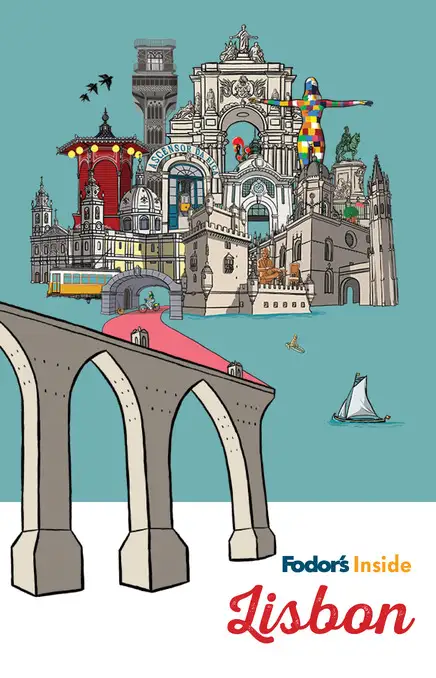A Bit of History
Lisbon's geographical location, sitting alongside the wide and natural harbor of the Tagus River (Rio Tejo), has made it strategically important as a trading seaport throughout the ages. The city was probably founded around 1200 BC by the Phoenicians, who traded from its port and called it Alis-Ubbo. The Greeks came next, naming it Olisipo. But it wasn't until 205 BC that Lisbon prospered, when the Romans, calling it in their turn Felicitas Julia, linked it by road to the great Spanish cities of the Iberian Peninsula. The Visigoths followed in the 5th century and built the earliest fortifications on the site of the Castelo de São Jorge, but it was with the arrival of the Moors in AD 714 that Lisbon, then renamed Al-Ushbuna, came into its own.
The city flourished as a trading center during the four centuries of Moorish rule, and the Alfama—Lisbon's oldest district—retains its intricate Arab-influenced layout. In 1147 the Christian army, led by Dom Afonso Henriques and with the assistance of northern Crusaders, took the city after a ruthless siege. To give thanks for the end of Moorish rule, Dom Afonso planned a cathedral on the site of a mosque, and the building was dedicated three years later. A little more than a century after that, in 1255, the rise of Lisbon was complete when the royal seat of power was transferred here from Coimbra by Afonso III, and Lisbon was declared capital of Portugal.
The next great period—that of os descobrimentos (the discoveries)—began with the 15th-century voyages led by the great Portuguese navigators to India, Africa, and Brazil. During this era, Vasco da Gama set sail for the Indies in 1497–99 and Brazil was discovered in 1500. The wealth realized by these expeditions was phenomenal: gold, jewels, ivory, porcelain, and spices helped finance grand buildings and impressive commercial activity. Late-Portuguese Gothic architecture—called Manueline (after Dom Manuel I)—assumed a rich, individualistic style, characterized by elaborate sculptural details, often with a maritime motif. The Torre de Belém and the Mosteiro dos Jerónimos (Belém's tower and monastery) are supreme examples of this period.
A dynastic coup led to a few decades of rule from Madrid, which ended in 1640. With the assumption of the throne by successive dukes of the house of Bragança, Lisbon became ever more prosperous, only to suffer calamity on November 1, 1755, when it was hit by the last of a series of earthquakes. Two-thirds of Lisbon was destroyed, and tremors were felt as far north as Scotland; 40,000 people in Lisbon died, and entire sections of the city were swept away by a tidal wave.
Under the direction of the prime minister, Sebastião José de Carvalho e Melo, later to be named Marquês de Pombal in reward for his efforts, Lisbon was rebuilt quickly and ruthlessly. The medieval quarters were leveled and replaced with broad boulevards; the commercial center, the Baixa, was laid out in a grid; and the great Praça do Comércio, the riverfront square, was planned. Essentially, downtown Lisbon has an elegant 18th-century layout that remains as pleasing today as it was intended to be 250 years ago.





